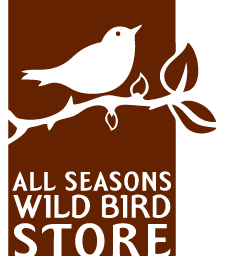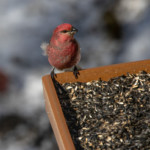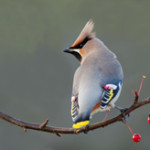Minnesota’s occasional winter birds
An irruption is defined as a sudden change in population density of a species in a location. Simply put, it’s an influx of a bird species (or multiple species) that we don’t usually see in our area. Irruptions can occur in response to an increase in a species populations or a change in movement patterns based on food availability.
Common Redpolls and Pine Siskins
Every few years, we’re lucky to have an irruption of Common Redpolls and Pine Siskins coming down into the lower 48 states. Their visits are likely due to a shortage of conifer seeds and catkins in the North. Audubon.org is reporting that the U.S. is undergoing a Pine Siskin irruption this season (2020/2021). Watch the following short video about identifying and attracting Common Redpolls and Pine Siskins:
Purple Finches
While Purple Finches are predicted to migrate south out of Eastern Canada this winter (2020), we are not seeing currently influx of these occasional visitors here in Minnesota. In irruption years, you may mistake these raspberry-colored finches for year-round House Finches at your feeders. Here’s a video for how to make a positive identification.
Crossbills, Red-breasted Nuthatches, Grosbeaks and Bohemian Waxwings
Other songbirds commonly forced southward when seed crops are poor include crossbills, Red-breasted Nuthatches, Pine and Evening Grosbeaks and Bohemian Waxwings. Here in 2020, the Twin Cities are seeing an irruption of Red-breasted Nuthaches, while Evening Grosbeaks are increasingly making appearances in northern parts of Minnesota. While most irruptions may bring one or two species into the state, occasionally we see a mega-irruption—like that of 2012—when a half-dozen species of irruptive songbirds descended on the state. And of course, some years we may not see any irruptions of songbirds into Minnesota.
Owls
A few species of owls make their way to Minnesota every few winters, including Saw-whet Owls and Snowy Owls. The 2013-2014 irruption of Snowy Owls made quite a splash, as birders from around the state and country traveled to sighting locations in Minnesota for the possibility to glimpse these Arctic birds. This Snowy Owl irruption was likely due to a bumper crop of lemmings in the arctic. More lemmings meant more food, which meant an increase in owl population. As populations grew, the owls spread southward, seeking territory. Similarly, Saw-whet Owl invasions were tied to an abundance of voles.
Attracting Irruptive Species
If you’re interested in attracting irruptive species to your backyard, it’s a good idea to keep an eye on our Facebook page, where we report unusual sightings. Then, ready your feeders with the seeds that will attract irruptive species:
- Suet, sunflower, and peanut pick-outs for Red-breasted Nuthatches
- Golden safflower and black-oil sunflower for Pine and Evening Grosbeaks
- Nyjer® and Nyjer® and chips for redpolls and Pine Siskins
- Open water in a heated birdbath for all of the above, plus Bohemian Waxwings








